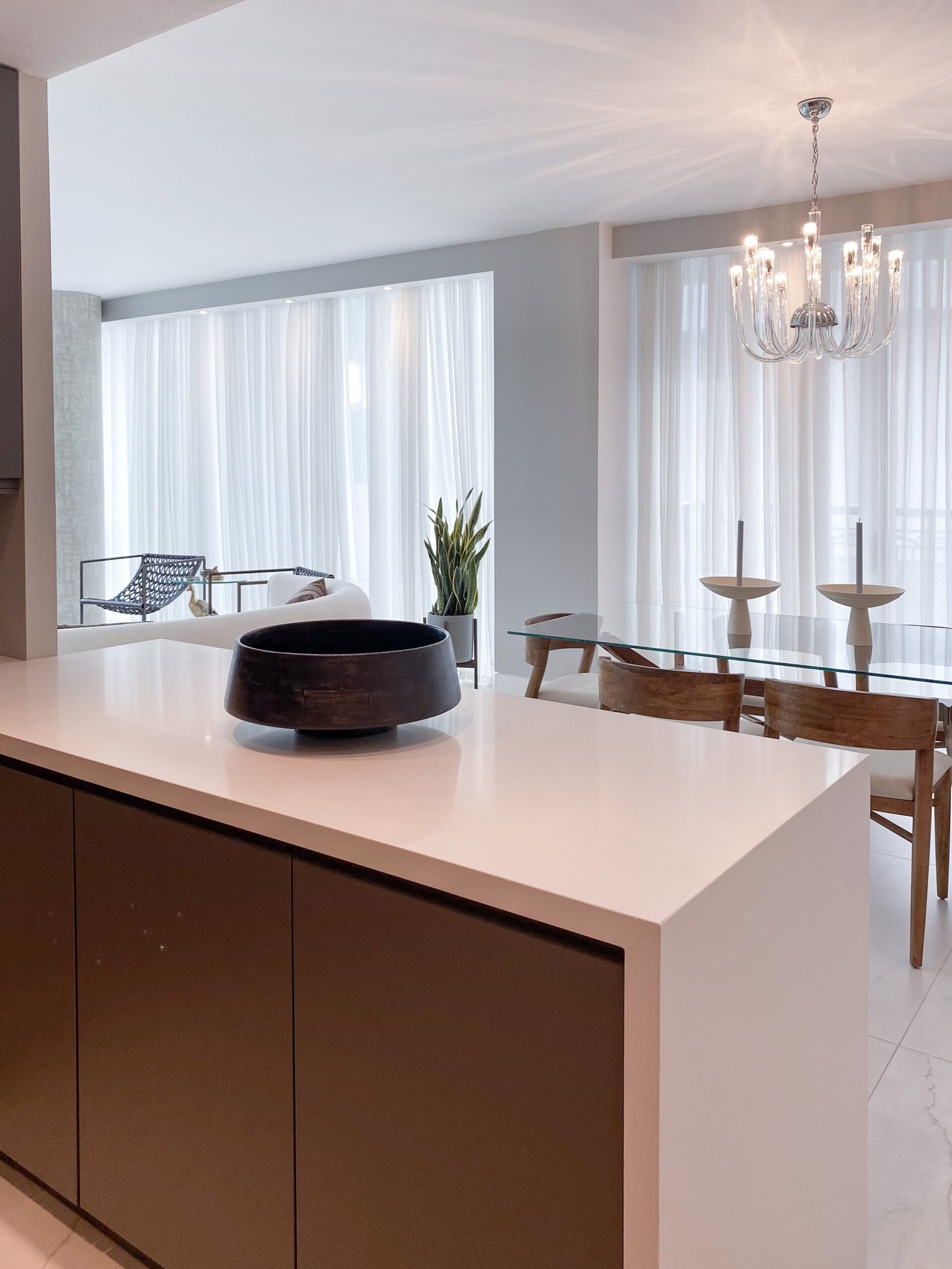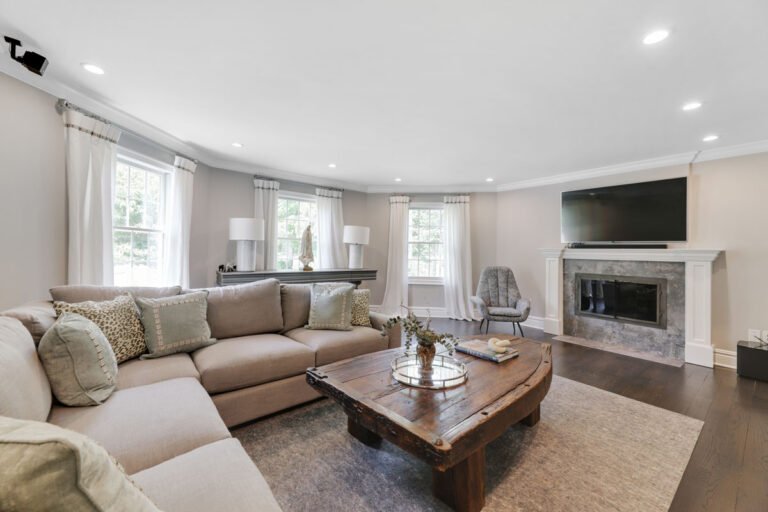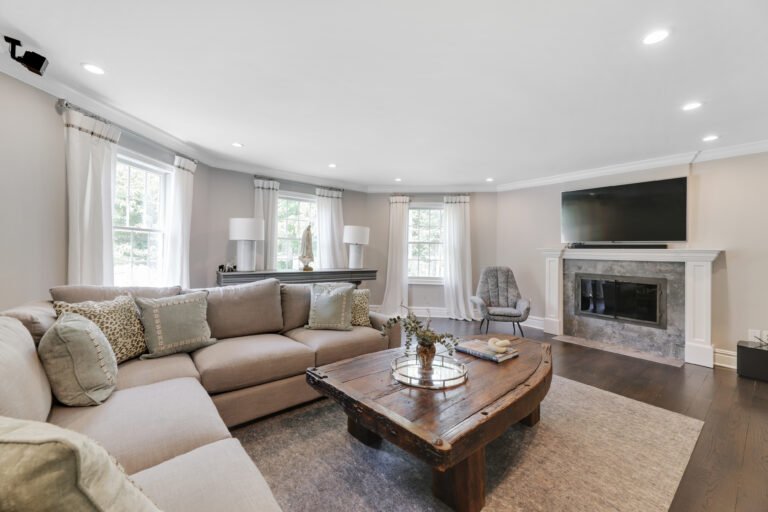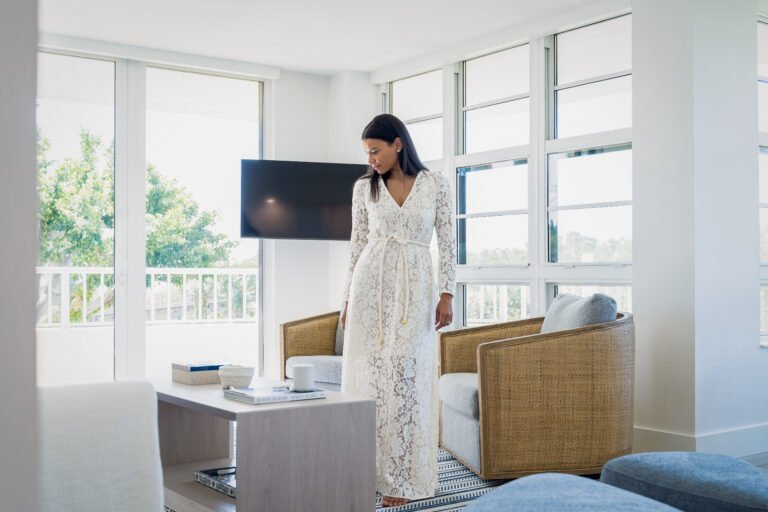Moving to Miami? What Every New Homeowner Needs to Know About Local Design
Welcome to Your New Miami Life
Relocating to South Florida is exhilarating—but for many newcomers from the Northeast or Midwest, it can also feel disorienting. The intense light, the humidity, the open layouts and soaring ceilings—it’s a whole new world compared to what you’re used to. And while your furniture and style worked beautifully in your previous home, they may not translate as seamlessly to your new Miami space.

But this transition doesn’t mean starting from scratch. It means evolving your surroundings to reflect your new lifestyle, without losing your identity.
I recently worked with a couple who had moved from a spacious suburban home into a high-rise condo in Coral Gables. Surrounded by moving boxes and furniture that suddenly felt oversized and out of place, the wife called me in a moment of overwhelm: “I don’t recognize my own things, and this doesn’t feel like home at all.”
The emotions were real—they were grieving their old life while trying to embrace a new one.
We started with just one room—their bedroom. Everyone needs a sanctuary, and I knew that creating one settled space could restore a sense of calm and control. We carefully edited what they brought, kept the pieces that truly mattered, and created new vignettes with their personal collections—family photos, favorite books, and meaningful art. It wasn’t about buying more; it was about curating what felt like them.
Within two weeks, they had a space that felt like home. And that one room gave them the confidence to move forward with the rest of the condo. Six months later, they told me it felt more “them” than any house they’d lived in before.
That’s the power of thoughtful design during transition—it’s not about changing everything. It’s about creating space to feel grounded again, one room at a time.
Regional Realities: What Makes Miami Homes Unique
Miami homes are built for tropical living. You’ll often find open layouts, expansive windows, and architectural details that prioritize light, ventilation, and a seamless indoor-outdoor flow. Floors are typically tile, engineered wood, or limestone—materials chosen for both their elegance and their ability to withstand the heat, humidity, and salt air of South Florida.
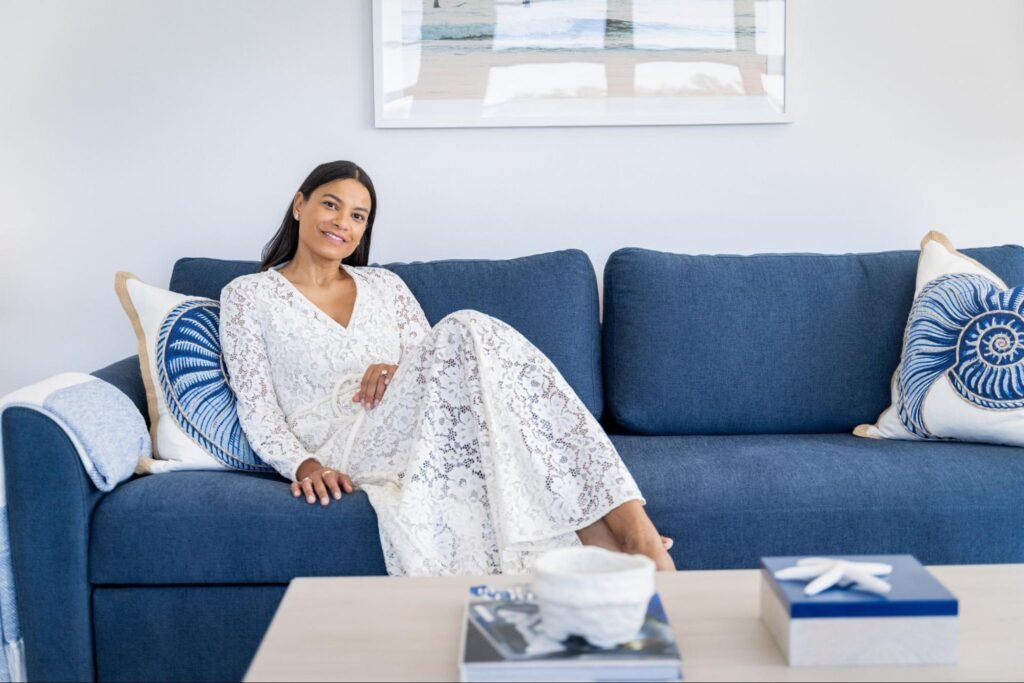
Unlike traditional homes in cooler climates, which often lean into formality and coziness, Miami homes invite a lighter, more breathable aesthetic. That beloved velvet sectional from your Northern home might not just clash with the architectural language—it could also fade and deteriorate in this climate.
But this isn’t about discarding what you love. It’s about reinterpreting your pieces so they work for your new lifestyle.
From City Chic to Coastal Calm: Style Shifts That Matter
We often work with clients who arrive in Miami with beautifully crafted pieces and rich palettes that made sense up north—but feel heavy or disconnected in their new home. That doesn’t mean abandoning your style. It means evolving it thoughtfully for the environment you’re now living in.
One of my favorite projects was a home in Pinecrest. The clients had a stunning mahogany dining table—rich, traditional, and expertly made—but it felt overwhelmingly formal in their new, airy home. They were ready to part with it, but I saw an opportunity. We kept the table as the anchor and transformed everything around it: replacing the upholstered chairs with natural woven ones, adding a jute rug, and swapping out their ornate chandelier for a sculptural pendant with organic lines.
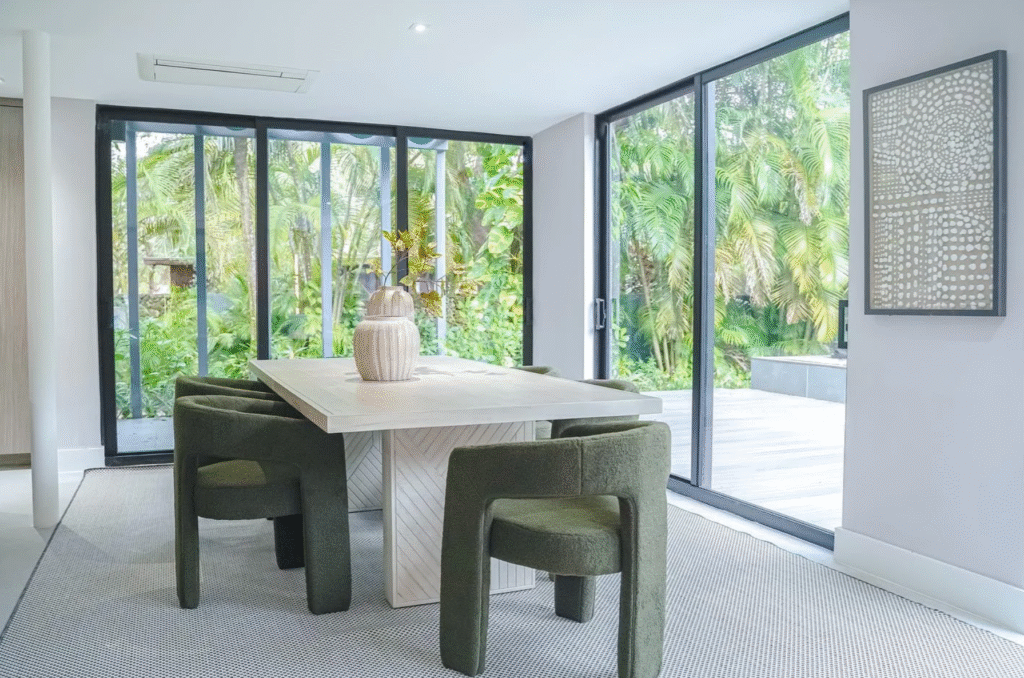
The transformation didn’t stop there. Their jewel-toned throw pillows—deep emeralds and sapphires that had worked beautifully in their previous home—were repurposed as accent pieces against a more neutral backdrop. Suddenly, these bold colors felt fresh and intentional, not overpowering.
The result was a dining space that felt elegant yet approachable—perfect for both special occasions and everyday meals. As the clients said, “This feels like us, but the best version of us.” That’s the essence of great design in Miami: honoring your personal story while creating spaces that breathe with your new surroundings.
Emotional Design: Making a House Feel Like Home
Moving isn’t just a physical transition—it’s deeply emotional. For many of our clients relocating to Miami, home becomes their anchor while everything else feels unfamiliar. That’s why we approach interior design not just as a visual exercise, but as an emotional one.
Emotional design is about creating spaces that support how you want to feel, not just how you want things to look. It’s the difference between a room that’s beautiful and one that makes you breathe easier the moment you walk in.
We begin by listening. What did you love about your previous home? What rituals or routines brought you comfort? What are you most excited about in your new life here? Whether it’s carving out a quiet morning coffee corner or designing a kitchen that invites connection, these emotional cues guide our entire process.
For relocating families, we focus on building what we call “comfort zones”—spaces that offer instant belonging. It could be a cozy reading nook that mirrors one from their old home, or a thoughtfully arranged family room where conversations flow as naturally as they did before.
Our goal is to help you feel emotionally settled before you’re logistically settled. Because when your home truly reflects and supports who you are, you’re more grounded, more joyful—and more ready to embrace this next chapter with confidence.
People don’t just want homes that look good in photos. They want spaces that help them feel like themselves again. That’s the power of emotional design.
Common Mistakes New Miami Homeowners Make
Rushing to furnish the entire home at once
One of the most common missteps we see is the urge to have everything “done” within the first few months. This pressure often leads to rushed decisions and purchases that don’t truly serve your lifestyle. Miami has a different rhythm—you need time to live in your space before you can truly understand how to design it.
We always recommend starting with one or two key rooms—often the bedroom and main living area—so you have comfort and functionality while the rest evolves more naturally. Observe how light moves through the space, how you gravitate toward certain areas during the day, and how your new routines take shape.
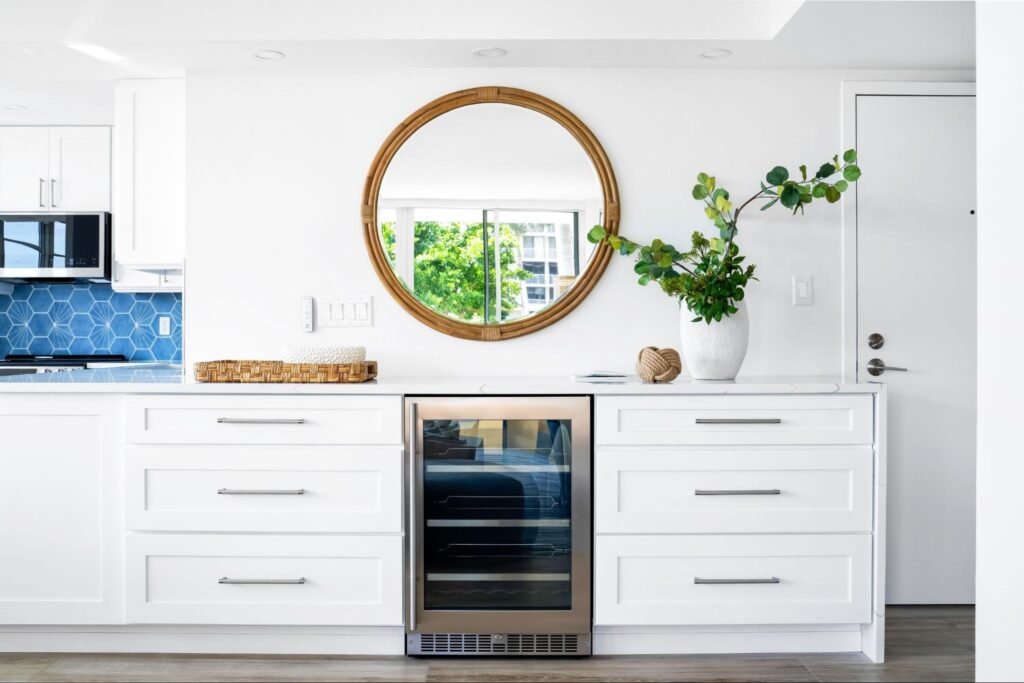
Designing based on assumptions, not actual use
You may think you’ll host formal dinners weekly, but discover that casual outdoor gatherings are more your style. Or you might find yourself using your balcony more than your dining room. By giving yourself time, you allow your home to reflect how you actually live—not just how you imagined life would be.
Ignoring Miami’s climate
South Florida’s humidity, sunlight, and salt air impact everything—from material choices to layout decisions. Fabrics that thrived in your previous home may fade, warp, or trap moisture here. Design in Miami requires knowledge of which materials age gracefully in this climate—and which ones don’t.
Trying to DIY a luxury home without local insight
Miami’s real estate and design scenes are highly specialized. Without local experience, it’s easy to miss key nuances—like HOA restrictions, delivery logistics, or regional vendor reliability. What seems like a simple project can quickly become overwhelming without the right guidance.
The takeaway?
Patience leads to authenticity. Thoughtful, phased design creates homes that truly support your real life in Miami—not just the version you envisioned when you arrived.
Why Working with a Local Designer Matters
Working with a local designer in Miami isn’t just about aesthetics—it’s about making the entire experience seamless, personalized, and stress-free.
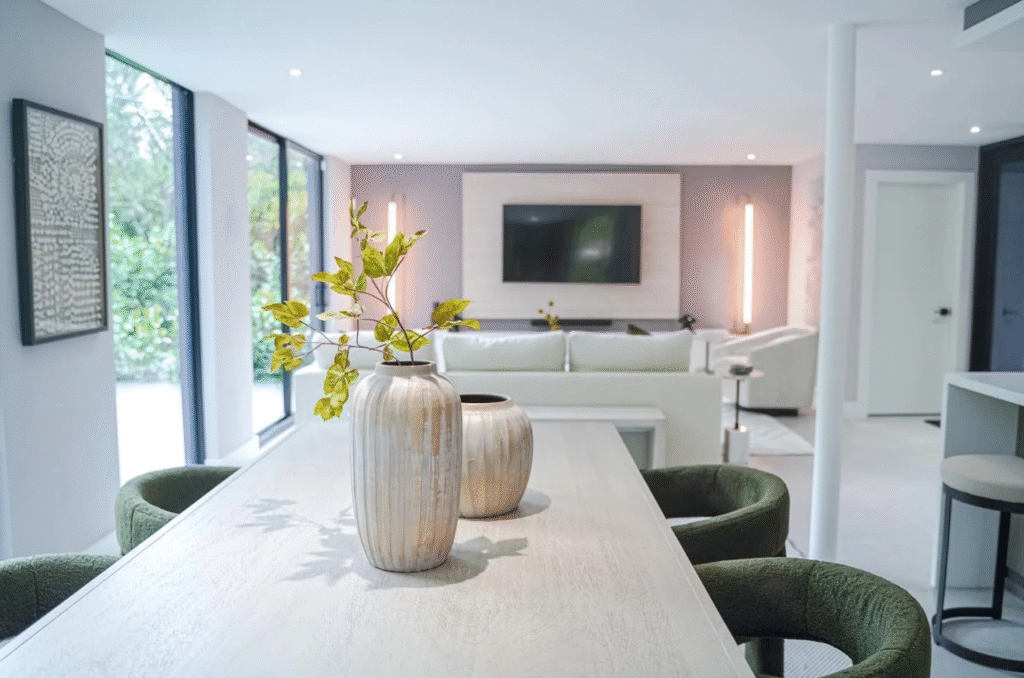
At Suraia Patricia Interiors, we do more than design beautiful rooms—we coordinate every moving part behind the scenes. From reserving building elevators and laying down floor protection during installation to navigating Miami’s unique permitting and delivery requirements, we handle it all. One client recently said, “I had no idea there were so many moving parts I wasn’t thinking about.” She was amazed that we had already communicated with her building’s concierge and met their 48-hour notice policy for large deliveries—before she even had to ask.
Beyond logistics, we help clients avoid costly design mistakes. We know which materials won’t hold up in the humidity, which furniture won’t fit the flow of your space, and which decisions might conflict with your building’s architecture or lifestyle. Our local insight becomes your peace of mind.
We also manage all vendor relationships, track every custom order, and resolve issues before they ever reach you. If something arrives damaged or delayed, you won’t be making phone calls—we’ve already found the solution and adjusted the plan.
As one client recently told us, “You made this feel like a luxury experience instead of a stressful project.” That’s our goal. The peace of mind we provide—knowing every detail is handled with care—is often more valuable than the design itself.
Case Study: Northeast Style Meets Coconut Grove Serenity
This project began with a big shift: a couple relocating from a 4,000-square-foot family home in the Northeast to an 1,800-square-foot condo in Coconut Grove. The downsizing alone was daunting—but the emotional weight of letting go of beloved pieces made it even harder. Their formal dining set overwhelmed the space, heavy drapes blocked the gorgeous natural light, and the overall feel was dark and disconnected.
The wife said it best: “I feel like I’m living in someone else’s home.” They cherished their furniture individually, but nothing worked cohesively in their new environment.
We began with what I call a “love audit”—a process to identify which pieces held true emotional value and which ones were simply relics of a past lifestyle. The dining table stayed—it was where they’d celebrated every family milestone. But the matching buffet and oversized chairs were donated to make room for something more fitting.
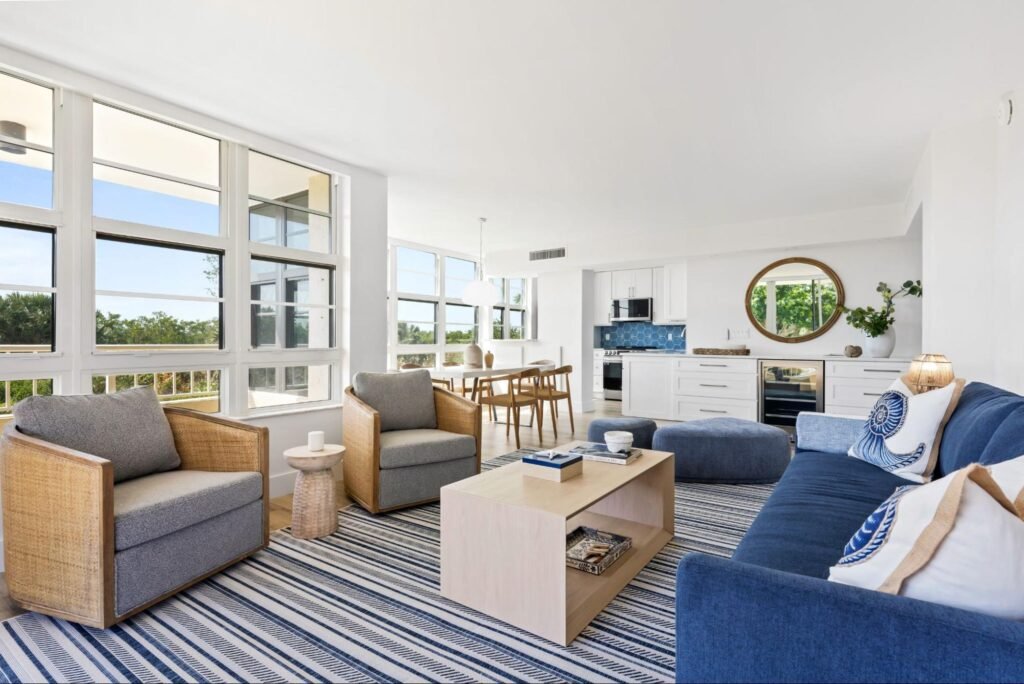
We then introduced lighter elements with purpose: linen curtains that softened the light, a jute rug to ground the space, and coastal artwork that connected them to their new surroundings. We reconfigured the layout to highlight their water views and create better energy flow throughout the condo.
The transformation unfolded over three months. At the final reveal, the husband said, “This feels like our home, but better.” And the wife smiled and said, “I finally understand what people mean when they say ‘Miami living.’ It’s more relaxed—but we didn’t lose our elegance.”
Six months later, they’re hosting dinner parties regularly and telling friends it was the best move they ever made.
Let Us Help You Feel at Home in Miami
Moving to Miami is a big transition—but it doesn’t have to feel overwhelming. Whether you’re navigating downsizing, redefining your style, or simply adjusting to the rhythm of a new city, we’re here to make the process thoughtful, beautiful, and deeply personal.
At Suraia Patricia Interiors, we don’t just design homes—we help you feel rooted, confident, and at ease in your new space. From your very first room to your final reveal, every detail is handled with care, clarity, and intention.
Ready to turn your Miami home into the most supportive, personal space in your life?
Contact us today to begin your design journey.

